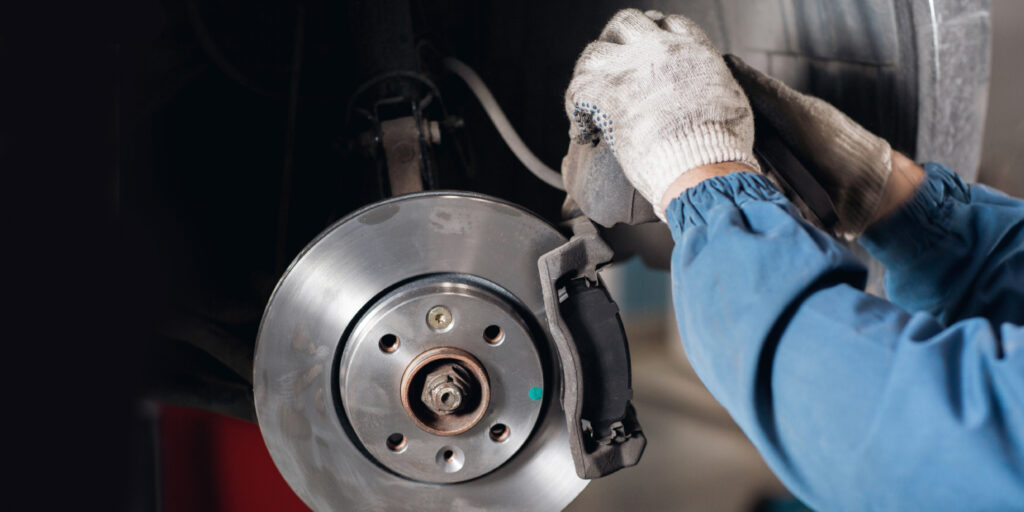Now that we are coming into the holiday season, there are a number of things you can do to drive up productivity, sales, customer satisfaction and profits. Each one of the below tips worked wonders for me when I was still in the auto repair business, and they are still effective today for many of our coaching clients, so I know they can work for you as well.
1. End of Year Performance Bonuses – All that you need to do is set a sales goal for the end of the year, and then tell your entire staff that if the goal is reached by December 31st, they will be entitled to a really nice bonus. You can also tell your techs that if they reach certain productivity goals, you will give them a predetermined amount of credit that they can use on their favorite tool truck.
2. Schedule a Holiday Season Charity Drive – Pick a charity (or cause) that is close to your heart, and that will reach the hearts of your ideal customers. Examples would be the US Marine Corps Toy for Tots campaign, food for the homeless, and fundraisers for life-threatening illnesses, local humane societies and the Wounded Warriors Foundation. By raising money for these types of organizations you’ll not only be helping a worthy cause, but you will be connecting with people who may very well be your ideal customers. In my case, we took out full-page ads in local publications notifying our community that we were collecting toys for battered children who were in protected safe houses, and the stream of donors who came through our doors was overwhelming. Nowhere in the ads was there any promotion of our company or services. It was all about the battered children, and how others could help by simply dropping off the much-needed toys.
3. Send the right greeting cards – Identify your top customers, and then rather than sending them one of the typical pre-printed holiday season cards, send them a nice boutique card with a hand-written message inside. All that you will need to do is go to a local card shop that sells really nice cards that are blank inside, and then find the cards that best reflect the holiday season. Then write a short, handwritten message inside that comes from your heart. You have my promise; your cards will be absolute standouts that will send a powerful message to your customers that you really do care about them.
4. Make those phone calls – As we all know, there are certain customers in every business that rise well above all others. You should make a list of those people, and then call them to personally wish them a happy holiday season.
5. Place a ribbon on each computer screen – The reason I did this at the shops I owned was to remind my advisors to wish each and every customer a happy holiday at the point of car delivery. I’m not suggesting a quick “Happy Holidays”, but rather am recommending that your advisors take a minute to pass on a heart-felt message to their customers, and then ask those customers to pass the message on to their families as well.
6. Gifts to key customers – I am not recommending that you give gifts to everyone, but to those customers who are particularly special in many ways. In those cases, you may want to give them a beautiful book that contains images of wildlife, nature, etc. along with a personalized message from you written inside.
7. Give to those who serve – Whether it be to the police and fire departments, or to the doctors and nurses who work in the hospital ICU’s during the holiday season, by giving those who serve a beautiful gift basket of fruit, candies, etc., you will be rewarding those who have earned it through their service, while sending a powerful message about the type of person you are.
If you apply these tips to your business, you have my promise; not only will your sales, customer satisfaction scores and profits go up, but you will be separating yourself from your competitors in ways that will help you build a more profitable, successful business for years to come.
For additional help building a more profitable, successful auto repair business, learn more about the 1-on-1 coaching and customized action plan offered through the Elite Coaching Program.













I’m not a financial scholar by any means, but I know what return on investment (ROI) is. It’s a mathematical formula that yields a representation of the profitability of any type of investment. In the automotive repair industry, we primarily associate this with equipment. Admittedly, I’ve never used the term much, more often approaching things from the standpoint, “Am I making money with this or not?” As technicians and shops, our typical thought process centers on each individual job, how much time and money we have into it, so we’re used to thinking profit or loss, and also pretty good at knowing if we made money, or if we lost our “back quarters.”But over time I’ve learned that the thought process alone is not always the best approach, and making money doesn’t necessarily mean a good ROI. Even if you don’t go crazy with an exponentially long, complicated equation, if you understand the basic idea and process of calculating ROI, it can help you make good purchasing decisions. The base calculation would be dividing your net profits by the cost of the equipment. That’s your ROI. Then, if you want to take it further, you can divide that number to get a time-based ROI average.Let’s look at a basic calculation. You buy something for $10, then sell it for $14. Your profit is $4. Divide profit by investment, ($4/$10) and you get an ROI of 40%. Not bad, but if it took two years to make this profit, then your ROI would be 20% annualized, which is not as impressive. You can use this basic formula to compare products you sell as well, and it may help you decide what’s best to keep in stock or not.Now let’s try something with equipment. You have an old tire machine that’s paid for. You average one set of tires per week and it takes 1.5 hours to complete the job. You decide to buy a new tire machine that is much quicker and more efficient but it cost you $20,000. Now the same job only takes one hour. Based on the cost of technician salary, you calculate that it saves you $30 per job with this new equipment. In this case you would use the formula: savings (additional profit)/investment. At one set of tires per week, that works out to $1,560 per year. $1,560/$20,000 equals an ROI of approximately 8%. That’s not too good. It will take you almost 12 years to pay off the new machine.On the other hand, if you average five sets of tires per week, then your additional profit for the first year is $7,800. $7,800/$20,000 equals an ROI of 39%. That’s pretty good. A general rule of thumb is to pay off any piece of equipment within two to three years. This puts you right on track.But now, here is the problem. This is where we throw the proverbial wrench into the plans. Equipment is tricky. You should also calculate in installation and maintenance costs, as well as the cost of training for the new equipment, and factor in how long the equipment is going to be relevant. This is an especially important factor when considering a scan tool, the required updates and how long before it’s potentially obsolete. In the case of a tire machine, you can also calculate in savings from other benefits of a new machine, such as no more damage to wheels or tire pressure monitoring system (TPMS) sensors, which the new machine can eliminate.Some of this can be overwhelming, and it makes me realize why it’s easier just to fly by the seat of your pants and wonder, “Am I making money or not?” It’s an important business aspect, however, to know what is behind the idea because it can benefit you in so many ways. Even without math, you can almost visualize the numbers in your head.I’ll try it by leaving the formulas out to decide whether it makes sense to buy a dedicated TPMS tool when you already have a full-function scan tool with TPMS ability.If you get a TPMS problem every day and you use your full-function scan tool to diagnose it, most likely it takes much longer to boot and longer to navigate to the function. Even then, it may not cover all you need. Because there’s such a vast amount of information that a full-function scan tool has, it simply takes more for the manufacturer to keep everything current. Plus, you often must still rely on service information for certain procedures and then, if it’s the only scan tool for your shop, it ties it up for use in other diagnostics.Now, let’s compare that to a dedicated TPMS tool. Built with only one function in mind, they can make the process much quicker, have greater coverage, boot quicker and quickly walk you through all steps of any required TPMS resets. When you factor in the savings in time and the fact that your primary scan tool isn’t tied up, you can prove the value of a dedicated TPMS tool through ROI calculations. On the other hand, if you rarely work on TPMS systems, you can prove it wouldn’t make sense at all, since you do have the function on your primary scan tool.While you haven’t done any calculations, you’ve thought of it in that manner and can picture where the calculations might end up. If you’re on the fence, the math will give you the answer. Ultimately, your accountant could take the idea even further, with an undoubtedly more advanced knowledge of ROI, and almost certainly a way to calculate depreciation into the formula. That’s where I sign off, but you get the idea. It’s a great concept that represents fundamental business financials.